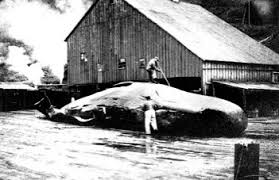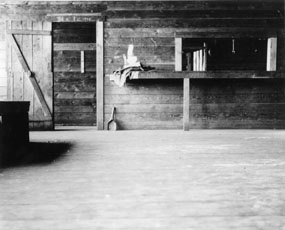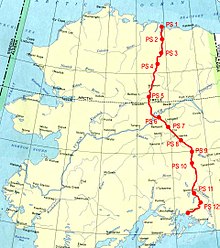Explain how Alaska's location was considered "strategic" during World War II. What were the war activities/events that supported the perspective of "strategic" Alaska?
Oil is an important natural resource to Alaska. Many people and things rely on oil to survive. In the 1900’s oil became very important to the Navy because Navy Ships could be fueled by oil. In 1913 the General Board of the Navy wanted a line drawn for Hawaii to Guam to Manila and defense facilities established. Having access to this precious resource is one example of how Alaska was strategic during World War II. As the need for airplanes and submarines emerged so did the need for more oil.
The Great Circle Route
Next Alaska’s location was strategic during World War II because of its physical location. Many military bases were created to allow Alaska to defend and be offensive during the war. In 1934 Anthony J. Dimond brought a bill to the table for 10 million dollars. This bill was rejected at first but once the base was constructed years later thousands of planes flew in and out of Fairbanks. The rationale behind building this base in Fairbanks was because it was the shortest path between the US and the Far East. This route would be known as The Great Circle Route. The Great Circle Route was 276 miles south of the Aleutian Islands and 2,000 miles north of the Hawaiian Islands. A trip from San Francisco to Hawaii and to Japan would be over 6,000 miles. Using the Great Circle Route that was parallel to the arc of the Aleutian Islands traveling from San Francisco to Japan would be 5,000 miles. The United States also built an air base on Adak in September 1942 so that access to Kiska and Attu would be closer.

Picture of aircraft during WWII Mt. McKinley is the backdrop.
Once aviation was well established Alaska’s location became even more important throughout the war. Being able to fly across the ocean made transporting troops and supplies much easier. Surprise attacks could now be launched as well. Because of Alaska’s location it had become the shortest possible route from the United States to Asia.
Due to Alaska’s large western coast naval bases were constructed at Sitka, Dutch Harbor, and Kodiak. This allowed Alaska to join the defense triangle with Panama and Hawaii. This idea was brought to the table in the 1920’s. By the late 1930’s these bases were being built. They were ready to go before the Japanese attacked Pear Harbor a few years later.
There were many important strategic locations during WWII. Dutch Harbor was the first place in Alaska the Japanese attacked on June 3, 1942. Unmak had the first airfield capable of handling aircrafts with wheels. It took 3 weeks for Americans to take back Attu after the Japanese attacked on May 11, 1943. Cold Bay was a base for exchange of ships and supplies with the Soviet Union during their war with the Germans.
Explain the purpose of the Aleut evacuation and give at least two examples of how the evacuation affected the Aleuts of Alaska.
The reason behind the Aleut evacuation was initially to protect the people after the Japanese attacked the Dutch Harbor June 3, 1942. During June and July 881 children, adults, and elders were evacuated from nine different villages. Native leaders wanted to evacuate to Kodiak Island (similar in landscape to what the Aleut people were accustomed) but government officials wanted an evacuation closer to the mainland and farther from the war zone.
The Aleuts were allowed basically one suitcase. They then boarded ships that were very cramped and were transported to SE Alaska. Their homes were burned to the ground or destroyed in some fashion by U.S. troops so that the Japanese would not be able to utilize them in any way. Once they reached their destination they had to stay in abandoned canneries or old gold mining camps. These places were known as duration villages. Many didn’t have plumbing or electricity. They were very crowded. In some places people had to take turns sleeping because of the lack of beds/space.
As a result of the poor living conditions and heartache many Aleuts did not make it the two years. Their living conditions resembled prisons. Disease was the result of 10% of deaths. Pneumonia and tuberculosis took many lives, in particular the very young and old. There was an extreme lack of medical care. At Funter Bay camp 32 died, at Killisnoo 17 died, at Ward Lake 20 died, at Burnett Inlet 5 passed away. Not only did they lose the lives of many but as the elders passed away so did the traditions and knowledge of the Aleuts.
Example of empty living space.
Even though times were hard the Aleuts found ways to rise above their sorrow. Some tried to find jobs. They built and renovated their lives quarters.The Aleuts worked to keep their faith alive and constructed a church much like the one they left behind, Church of the Holy Ascension of Christ.
The Aleuts were strong patriotic people and even though the U.S. government had treated them unkindly they still wanted to support them. 25 men joined the Armed Forces. The three men that were a part of the U.S. invasion of Attu Island were awarded the Bronze Star. They became more involved in democracy and voted in Territorial elections. The Aleuts didn’t want other generations to endure the hardships they faced.
Congress passed the legislation in 1980 to establish the Commission on Wartime Relocation and Internment. The legislation was to investigate the imprisonment of Japanese Americans and Aleuts. The result was a Presidential apology and survivors were given financial restitution for their hardships.
How might you use content from this module in your professional practice?
I would use the content regarding the Aleut evacuation. The Civil War is studied and there are other history topics that are studied that could correlate with the evacuation. I did some research on Wyoming and WWII and we had Japanese POW camps that I wasn’t aware of. Having students research the history of where they live is very important.
You could even tie the information into how people treat one another today. Bullying is a huge issue in schools. Students don’t seem to care about what has happened in the past. They are so consumed with what is happening now. Being able to link both types of information together would be very useful for students. It would be interesting to see what type of discussion would develop.
The Alaska Highway is another topic I would like to talk about with my students. I know I find myself taking highways for granted. Instead of thinking about how they were made or how they exist, I am caught thinking about how much longer it is before I reach my destination. I felt this way when I was driving from Wyoming to Alaska three summers ago. Reading about the development of the Alaska Highway was interesting.
Evaluation of Module:
I ended up doing some side research throughout this module to understand what exactly what groups I was researching and to make sure my facts were straight. There was indeed a great deal of information to work through but I was able to take away helpful information. World War II made a large impression on Alaska and I now am able to see and identify specific examples.
Response to Colleagues:
Gary's Alaska Blog: I found it interesting too how Alaska was such a large factor in World War II. General Mitchell was right when he stated, "I believe that in the future, whoever holds Alaska will hold the world.”
Northward Bound: Wonderful illustrations. Your links were really easy to use. I hadn’t thought of incorporating additional media like Utube. Brad you did a really nice job on your blog, very descriptive.
The Alaskan Adventure: You had some amazing photos and videos. It was neat to read your blog with your background of being a member of the National Guard!!














